Economy
Governments across Canada should prioritize energy infrastructure—including pipelines
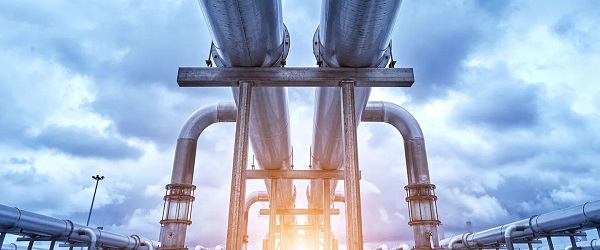
From the Fraser Institute
By Tegan Hill and Elmira Aliakbari
In a recent meeting with Prime Minister Mark Carney, the provincial premiers discussed major infrastructure and energy projects to be fast-tracked through a new federal approval process. While the general sentiment was that the meeting was productive and collaborative, the British Columbia government seemingly shot down Alberta’s proposed pipeline to B.C.’s northern coast. This political resistance to new pipeline infrastructure overlooks the positive potential impact such projects could have for Canada and beyond.
Prime Minister Carney plans to table legislation that would create a new major projects office tasked with reducing approval times from five to two years, among other measures. Major projects must meet numerous criteria before deemed in the “national interest” and expedited. The premiers have compiled a short-list of projects for consideration though the full list has not been publicly released.
Alberta Premier Danielle Smith’s proposed pipeline would transfer bitumen to the Port of Prince Rupert in B.C., which would open up access to Asian markets. B.C. Deputy Premier Niki Sharma, who attended the recent meeting in place of B.C. Premier David Eby, said the proposal has “no proponent” at this stage and that her government plans to focus on “shovel-ready projects.”
And it isn’t just the Eby government resisting the project—Steven Guilbeault, a member of Carney’s cabinet, recently dismissed the need for additional pipeline infrastructure, including to B.C.’s coast, based on incorrect information about the Trans Mountain pipeline’s capacity and future oil demand.
Again, this political resistance ignores key facts about Canada’s energy sector, including our current overreliance on a single customer. Currently, 97 per cent of our oil exports go to the United States. This heavy reliance on the U.S. market has made Canada vulnerable to U.S. policy changes, as highlighted by the recent threat of tariffs on Canadian energy. Expanding pipeline infrastructure—both westward, as proposed by Premier Smith, and eastward—would help us diversify our export market and allow Canada to reach customers in Asia and Europe.
And pipeline expansion is not just about exports; it’s also about enhancing energy security at home. Some parts of our country, namely Ontario and Quebec, remain heavily dependent on U.S. pipelines to meet their energy needs. Specifically, due to the lack of an west-east pipeline dedicated to oil, for more than 70 years Canadian oil extracted in Alberta has passed through the U.S. via Enbridge’s network before returning to Ontario.
Finally, this discussion shouldn’t be limited to oil. There is and will continue to be strong demand for liquefied natural gas (LNG) in many parts of the world, including in Asia, for many years to come, which presents Canada with a significant opportunity to become a major LNG exporter and provide cleaner-burning fuel to countries such as China and India. However, building the necessary infrastructure (pipelines and LNG terminals) is critical if we’re serious about seizing this opportunity.
Governments across Canada should support critical energy infrastructure, including pipelines. This means putting politics aside and recognizing the importance of infrastructure in expanding export opportunities, ensuring energy security, reducing global emissions and creating prosperity across the country.
Alberta
Yes Alberta has a spending problem. But it has solutions too
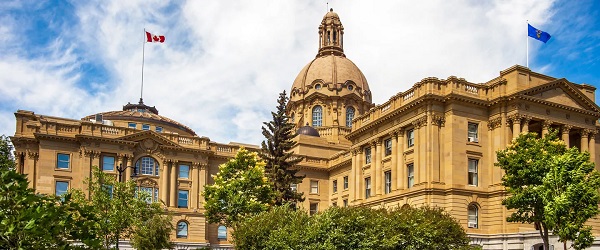
From the Fraser Institute
By Tegan Hill and Milagros Palacios
The Smith government’s recent fiscal update sparked concerns as once again the province has swung from budget surpluses to a budget deficit. To balance the budget, Finance Minister Nate Horner has committed to address the spending side and will “look under every stone” before considering the revenue side, and this is the right approach. Alberta’s fiscal challenges are a spending problem, not a revenue problem.
For perspective, if program spending had grown by inflation and population over the past two decades, it would be $55.6 billion in 2025/26 rather than the actual $76.4 billion. So, while the Smith government has demonstrated important restraint in recent years, total program spending and per person (inflation-adjusted) program spending is still materially higher in 2025/26 than in previous periods.
Alberta’s high spending is fuelling the projected $6.5 billion deficit. Consider that at the alternative spending level ($55.6 billion) Alberta would be enjoying a large budget surplus of $14.4 billion in 2025/26—rather than adding to the province’s red ink.
Despite this, the discussion around deficits often revolves around volatile resource revenue (e.g. oil and gas royalties). It’s true—resource revenue has declined year over year and that has an impact on the budget. But again, it’s not the underlying problem. The problem is successive governments have increased spending during good times of relatively high resource revenue to levels that are unsustainable without incurring deficits when resource revenue inevitably declines. In other words, the fiscal framework for the provincial government relies too heavily on volatile resource revenues to balance its budget.
As a share of the economy, non-resource revenue (e.g. personal income and business income) averaged 12.5 per cent over the last decade (2016/17 to 2025/26) compared to 11.1 per cent between 2006/07 to 2015/16. In other words, Alberta is collecting a larger share of non-resource revenues than in the past as a share of the economy. This statistic alone makes it difficult to argue that the province has a revenue problem.
So, what can the government do to rein in its spending?
Government employee compensation typically accounts for nearly 50 per cent of the Alberta government’s operating spending. From 2019 to 2024, the number of provincial government jobs in Alberta increased by 46,500. Over that period, total compensation for provincial government jobs jumped from $24.2 billion to $29.5 billion. Put differently, government compensation now costs $5.3 billion more annually than pre pandemic. The government should reduce the number of government jobs back to pre-pandemic levels through attrition and a larger program review.
Business subsidies (a.k.a. corporate welfare) is another clear area for reform. Business subsidies consume a meaningful share of each ministries‘ annual budget costing billions of dollars. For example, in 2024/25, grants were the second-largest expense for the ministry of environment at $182.0 million and the largest expense for the ministry of arts, culture and status of women at $154.2 million. For the ministry of energy and minerals, grants totalled $166.3 million in 2024/25. With more than 25 ministries, the provincial government could find meaningfully savings by requiring that each to closely examine their budgets and eliminate business subsidies to yield savings.
The Smith government’s recent fiscal update rung the alarm bells, but to fix the province’s fiscal challenges, one must first understand the underlying problem—Alberta has a spending problem. Fortunately, there are some clear first steps to tackle it.
Business
Mark Carney’s Climate Competitiveness Pitch Falls Flat
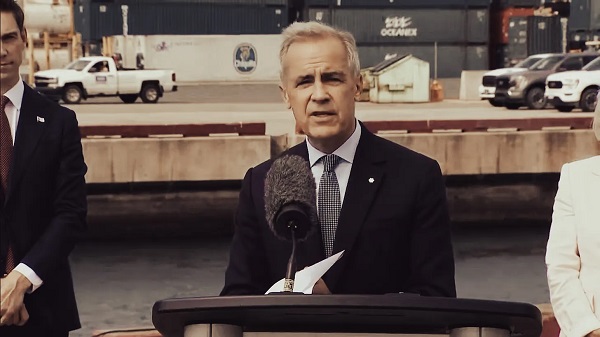
As Canada loses 50,000 manufacturing jobs, Carney talks climate buzzwords and Joly pushes EV imports, while Brookfield invests in pipelines abroad. Who is Ottawa really working for?
Prime Minister Mark Carney was in St. John’s to hand out money — $80 million of his new billion-dollar “regional tariff response fund” for small and medium businesses in Atlantic Canada. Which, let’s be honest, sure sounds a lot like an election pitch.
But then a reporter stood up and asked the real question: how does Canada plan to meet its climate targets for 2030 and 2035? Now, keep in mind, unemployment in this country is at seven percent—the highest in years—families are losing jobs, farmers are being hammered by tariffs, and this is what the press corps is worried about. Climate targets. Eye roll.
So how did Carney respond? With a brand-new slogan cooked up by a taxpayer-funded focus group: “climate competitiveness.” That’s the phrase. Climate competitiveness. Sounds impressive, doesn’t it? Like there’s a scoreboard somewhere, and Canada is going to “compete” to be the greenest.
But we have to ask the serious question, ‘compete’ against whom, exactly?
Lets look at China China? You know, the country that supplies about fifteen percent of Canada’s total imports. You know the country that supplies almost all of the goods in Canadian tire. Canada imported $62 billion (USD) worth in 2024 alone. Yeah, that China. The one that also happens to be the world’s largest emitter of greenhouse gases, responsible for about thirty percent of all global CO2 emissions. Eleven to twelve billion metric tons every single year, which is more than twice the United States.
So is that who Mark Carney thinks we’re competing with? Beijing? The same country where your solar panels, your EV batteries, your “green tech” all get churned out by factories powered with coal?
Let’s be real for a second. Almost everything you buy comes from there. Open Amazon right now, cheap electronics, kitchen gadgets, plastic junk that breaks in a week — all made in China. Walk into Canadian Tire, Walmart, Dollarama, it’s the same story. Try, seriously try, to find a sock not made in China. You can’t.
And here’s the kicker. You might think, okay, maybe Ottawa has a plan. Maybe, just maybe, someone in Mark Carney’s office has thought: “Wait a second, all these goods from Amazon, all the crap piled high at Canadian Tire, maybe we should tax the carbon embedded in them, so we can actually build a Canada-first, Canada-strong economy.”
Seems obvious, right? Put tariffs on dirty imports. Level the playing field. Protect Canadian workers.
Nope. Not happening. Elbows down, Ottawa doesn’t tax a single ton of Chinese carbon. Not one. Thats right Beijing carbon heavy manufacturing gets a free ride.
Our carbon taxes? They apply only to you. The farmer in Moose Jaw filling up his tractor. The commuter in Moncton just trying to get to work. The family in Thunder Bay who wants to heat their home through a Canadian winter. They pay. You pay. Everyone here pays. But China? The country that floods us with billions in imports, all made in coal-fired factories? Nothing.
I’m an independent Canadian journalist exposing corruption, delivering unfiltered truths and untold stories.
Join me on Substack for fearless reporting that goes beyond headlines
So let’s be crystal clear: the carbon tax isn’t about saving the planet. It’s about punishing Canadians for living in Canada. And giving Beijing an even bigger advantage while we kneecap our own economy and call it… “climate competitiveness.”
So maybe we’re not competing with China, Mark Carney would say. Maybe it’s India.
India!!! Don’t make me laugh! This is a country that’s made it perfectly clear it is not going to strangle its own economy in the name of “climate commitments.” They’ve said it over and over again. Yes, they’ll get to net-zero… by 2070. Fifty years from now. By then, most of us will be dead. But don’t worry, they’ll be green in the afterlife.
And the actions back it up. Just this summer, July 2025, India scrapped its sulphur dioxide rules for coal plants. For a decade, they had mandated clean-air technology, scrubbers; on coal-fired plants. Expensive, sure, about $30 billion worth. But at least it kept the air breathable. And what did they do? They reversed it.
Now, if a coal plant is scheduled to retire before 2030, it doesn’t need the technology at all. If the plant isn’t near a dense population center, same deal, pollute away. Fire up the stacks. Pump sulphur dioxide into the atmosphere.
And remember, coal already powers most of India’s energy needs. They’re building, expanding, doubling down. Because India’s priority isn’t climate sermons, it’s economic development and energy security. They want cheap, reliable power. And they’re not going to apologize for it.
So let’s recap: China is the world’s biggest polluter, building coal plants like Starbucks opens coffee shops. India has flat-out said, “We’ll clean up in 50 years.” And Mark Carney thinks Canada, with 40 million people, is “competing” with them by taxing farmers, commuters, and families into oblivion while handing foreign polluters a free pass.
And if you think it’s just China and India, think again. Let’s take a quick tour.
Brazil? They talk a good game at climate summits, but they’re still torching the Amazon to make room for cattle and soybeans. Net-zero slogans on one hand, bulldozers on the other.
Vietnam? Their economy is powered by coal too, and they’re one of the fastest-growing importers of Canadian coal. Yes, we ship them coal so they can burn it. But don’t worry, we’ll slap a carbon tax on a Saskatchewan farmer for planting wheat.
And Russia… Well, Russia doesn’t even pretend. They drill, they mine, they pipe gas straight into Europe, and they laugh at the idea of “climate competitiveness.” They’re too busy selling oil to fund their wars.
So that’s the global competition Mark Carney thinks we’re in. Countries that are either doubling down on coal, clear-cutting rainforests, or weaponizing oil and gas, while Canada is told to spend a million dollars to move an anthill before we can build a mine.
Mélanie Joly Talks Climate Targets as Manufacturing Jobs Disappear
And speaking of “climate competitiveness,” Mélanie Joly shows up in Montreal, standing in front of aluminum executives, at the exact moment Canada has lost more than 50,000 manufacturing jobs since January. Fifty thousand. Gone. Families ruined, paycheques wiped out. And what does she talk about? Not jobs. Not tariffs. Not survival. No, she talks about climate targets. EV mandates. “Competing” with Chinese electric cars.
Yes, while Canadian auto workers are staring down layoffs, her big idea is to import more EVs from Asia and call it competition.
That’s not a joke… she actually said that.
Canada set a goal: by 2026, 20% of new car sales should be EVs. You know where we are today? Eight percent. Less than half. Why? Because the government pulled subsidies, sales collapsed, and now automakers are being squeezed with 25% tariffs from the U.S. and penalties at home if they don’t hit EV targets. It’s like being forced to sprint while someone nails your shoes to the floor.
So what’s Joly’s solution? Not to fix the tariffs. Not to protect Canadian auto workers in Cambridge, Alliston, Hamilton, Brampton. No… she wants to “compete with China’s EVs” by importing them from Asia and Europe. Think about that: Canada loses tens of thousands of manufacturing jobs, and her answer is. Wait for it…
Import more foreign cars. That’s her industrial strategy.
And then she promises, with a straight face, that Canada will still “follow our goals” for 2030 and 2035. Never mind that when those targets were set, Donald Trump wasn’t back in the White House, the Inflation Reduction Act was still in place, and Canada wasn’t facing a trade war. But hey details.
This is the Liberal Party’s version of economic leadership: brag about climate targets nobody believes in, while your auto sector bleeds out, while aluminum workers sit in a room wondering if they’ll even have jobs next year. And she’s smiling the whole time.
Final Thoughts
Look, I’m not anti-green. Nobody’s against cleaner air or smarter technology. But I’m also not stupid. And when you actually listen to these people. Mark Carney, Mélanie Joly, the whole Liberal bunch, you realize pretty quickly what’s going on. They’re snake-oil salesmen. Selling a grift to unassuming Liberal voters, to suburban women who want to feel virtuous, to boomers who want to believe they’re “part of the solution.” And the pitch is always the same: don’t worry, we’ve got a plan.
But the truth is, the plan is a scam. While Carney lectures Canadians about “climate competitiveness,” his company Brookfield has been buying pipelines. Not small ones. Big ones.
In Canada, Brookfield swallowed Inter Pipeline—Cold Lake, Polaris, Corridor— hundreds of kilometers of pipe moving nearly a million barrels a day out of Alberta. And just this year? They went bigger. Colonial Pipeline in the United States. Five-thousand five-hundred miles of pipe, three million barrels of gasoline, diesel, and jet fuel flowing every day from Texas to New Jersey. Brookfield owns it. Mark Carney’s company owns it.
So here’s the question: if pipelines are evil, if oil and gas are killing the planet, why is Mark Carney investing billions in them? Why is he making money hand over fist off the very industry he’s suffocating here at home?
Because it’s a shell game. They’ve brainwashed you into thinking they’re virtuous while they cripple your income, your children’s prosperity, your country’s future. They make it impossible to build here, then they offshore it to China, and sell it back to you at a premium. And if you tried to produce the same thing in Canada? Carney and his GFANZ banker friends would wag their climate-virtuous fingers and shut it down.
It’s all fake. A grift. These people are liars, pure and simple.
Here’s the reality: real progress doesn’t come from more red tape and taxes. It comes from innovation. Twenty years ago a light bulb was 100 watts. Today, the LED equivalent is 13.5 watts. That’s how you build, by making things better, faster, more efficient. Businesses already want that. Efficiency is savings, savings is profit. You don’t need a Liberal lecture for that.
And that’s the choice in the next election. Do we keep letting grifters in Ottawa sell us out to China while pretending they’re saving the planet or do we take our country back?
Canada was built by farmers who fed the world, by workers who laid the tracks, by families who braved the cold because they believed this country was worth it. They didn’t wait for permission from bankers and bureaucrats. They just built.
It’s time we did the same. Build it strong. Truly build Canada first.
This country doesn’t belong to the Laurentian elite.
It doesn’t belong to the lobbyists in Ottawa.
And it sure as hell doesn’t belong to Mark Carney.
It belongs to us… the people who built it, who work it, who love it. True North, strong and free.
I’m an independent Canadian journalist exposing corruption, delivering unfiltered truths and untold stories.
Join me on Substack for fearless reporting that goes beyond headlines
-

 Censorship Industrial Complex2 days ago
Censorship Industrial Complex2 days agoFreedom of speech under threat on university campuses in Canada
-
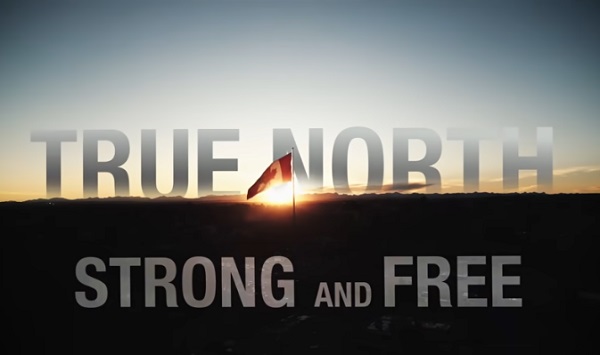
 Alberta1 day ago
Alberta1 day agoOttawa’s destructive federal energy policies and Premier Danielle Smith’s three part solution
-

 Business2 days ago
Business2 days agoCarney engaging in Orwellian doublethink with federal budget rhetoric
-
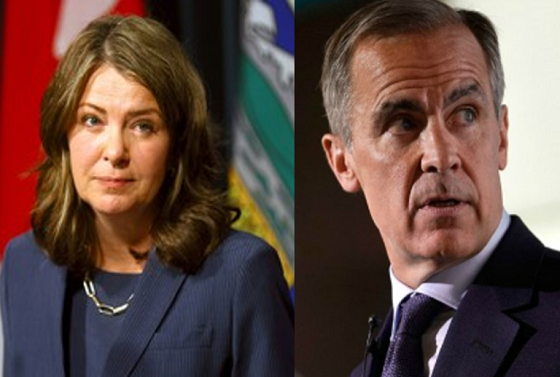
 Alberta2 days ago
Alberta2 days agoIs Alberta getting ripped off by Ottawa? The numbers say yes
-
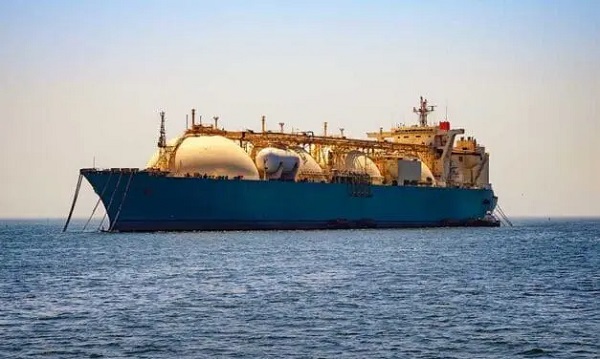
 Energy2 days ago
Energy2 days agoCanada’s LNG breakthrough must be just the beginning
-

 Business2 days ago
Business2 days agoCourt’s ‘Aboriginal title’ ruling further damages B.C.’s investment climate
-
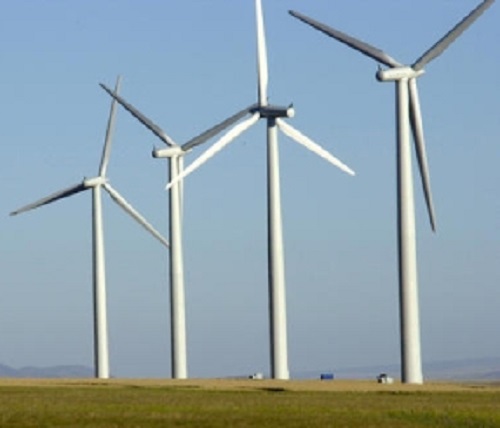
 Agriculture1 day ago
Agriculture1 day agoIn the USA, Food Trumps Green Energy, Wind And Solar
-

 Business2 days ago
Business2 days agoManitoba Must Act Now To Develop Its Northern Ports







